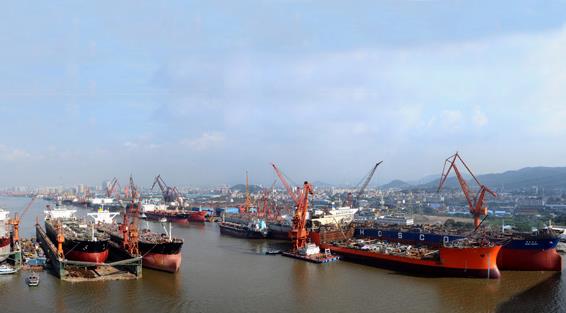
NYK, K LINE END YEAR IN LOSSES, MOL DELIVERS PROFIT
Japanese Big Three shipping companies have posted mixed financial results for the fiscal year ended March 31, 2017, as only Mitsui O.S.K. Lines (MOL) wrapped up the year with profits.
The worst hit was the Nippon Yusen Kabushiki Kaisha (NYK Line) which saw a net loss of JPY 265.7 billion at the end of the year, compared to a net income of JPY 18.2 billion reported in the previous fiscal year.
The company’s revenues for the period were down to JPY 1.92 trillion from JPY 2.27 trillion reported a year earlier, while its operating loss stood at JPY 18 billion, compared to an operating income of JPY 48.9 billion seen in the fiscal year 2016.
Although the overall freight rate market showed a gentle recovery from the historically low levels at the beginning of the year 2016, business performance
declined year on year, NYK Line’s compatriot Kawasaki Kisen Kaisha (K Line) said.
On the back of such business environment seen in the shipping industry, K Line informed that its loss widened during the year, reaching JPY 139.4 billion, compared to a loss of JPY 51.4 billion seen in the period ended March 31, 2017.
Additionally, K Line said that its revenues for the year dropped to JPY 1.03 trillion from JPY 1.24 trillion, while it reported an operating loss of JPY 46 billion, compared to an operating income of JPY 9.4 billion in fiscal year 2016.
“In the containership business, cargo movements shifted to an upward trend in the second-half of the fiscal year, mainly in the East-West services; however not sufficient to recover the slump in the freight market at the beginning of the fiscal year and loss increased year-on-year,” K Line said.
The dry bulk market has also lifted out of the historically low levels at the start of the year and “is on a course for recovery.” While the vessel supply-demand gap is on the way to improve, “the market conditions were weighed down.”
K Line informed that it worked on measures to improve profitability, however, “business performance declined year-on-year.”

Out of Japan’s Big Three shipping firms, MOL was the only to end the fiscal year with a net income, despite a decrease in its revenues.
Namely, the shipping firm’s net income stood at JPY 5.2 billion, bouncing back from a net loss of JPY 170.4 billion seen in the previous year.
While the company’s operating profit reached JPY 2.5 billion, remaining almost the same as a year earlier, MOL’s revenues dropped to JPY 1.5 trillion from JPY 1.71 trillion in the respective periods.
“Looking at the maritime shipping market conditions, the dry bulkers experienced intensive chartering activities by major shippers in western Australia and an increase in the volume of coal imports in China, allowing to avoid a record low hit in the fourth quarter of the previous fiscal year,” MOL said.
The company added that, although the dry bulker market continued to experience suppression of market rises, in late 2016, firm iron ore shipments from major ports in Brazil and increased North American grain shipments pushed the market to once again rise and exhibit an overall trend of recovery.
Looking at the current fiscal year ending March 31, 2018, MOL said that its expects its profit to reach JPY 10 billion. Similarly, the company forecast a rise in its operating profit which could reach JPY 9 billion, while its revenue is now expected to increase to JPY 1.61 trillion for the fiscal year from April 1, 2017 to March 31, 2018.
World Maritime News Staff
Source: http://worldmaritimenews.com/

